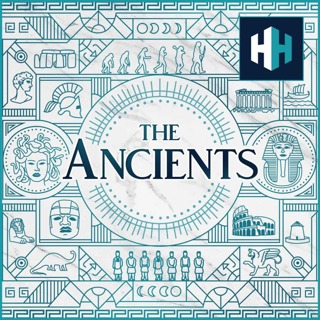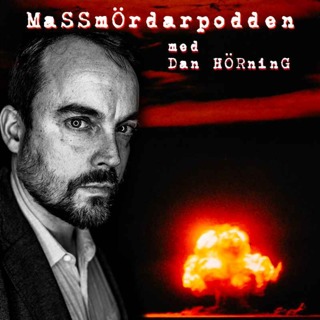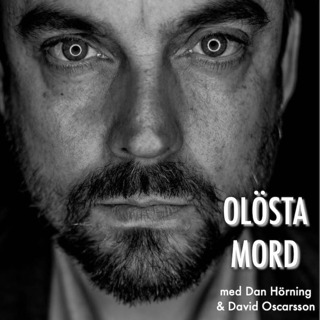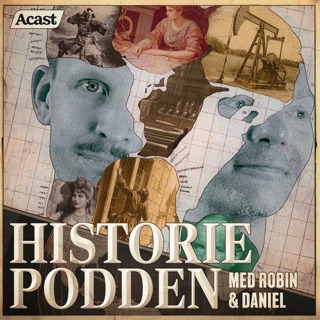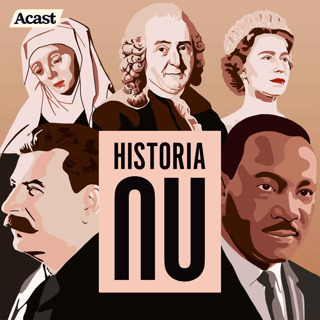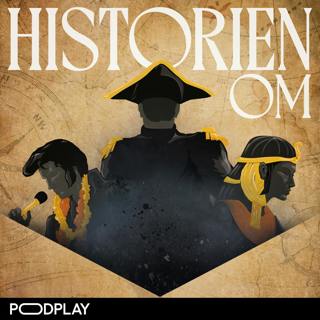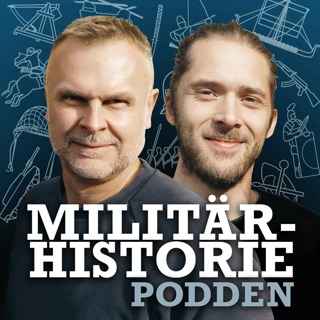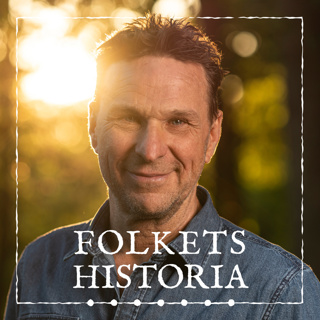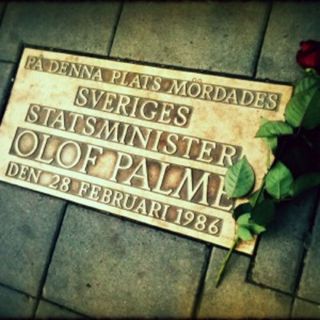
Palmyra: Pearl of the Desert
Palmyra features in headlines today as a casualty of IS destruction, but during its heyday it was a monumental city set on an oasis in the Syrian desert. First mentioned in the second millennium BC, it gained wealth from the caravan trade which moved goods across the desert. What makes it unique, however, is not its wealth but its multicultural, multilingual nature. Buildings in Palmyra featured inscriptions in Greek and Palmyrene and, after becoming a subject of the Roman Empire in the first century AD, Latin. To find out more about this beautiful site, Tristan spoke to Ted Kaizer from Durham University. Ted is Senior Lecturer in Roman Culture and History, and takes us through the growth of Palmyra, its position on the crossroads of cultures and whether or not it was really subject to Roman rule. Hosted on Acast. See acast.com/privacy for more information.
18 Feb 202146min

Myths of Masada
In 73 AD, 967 Jewish rebels against the Romans committed mass suicide atop the Masada Fortress. Or did they? In this second part of Tristan’s interview with Jodi Magness from the University of North Carolina, who co-directed the 1995 excavations of the Roman siege works at Masada, we separate myth from mystery. Jodi weighs the question of Josephus’ sole account of this event against the archaeological evidence, and the external forces which may have influenced the mythologising of Masada.Jodi is the author of 'Masada: From Jewish Revolt to Modern Myth'.Part 1: historyhit.com/masada1 Hosted on Acast. See acast.com/privacy for more information.
14 Feb 202123min

Rome: 'The Eternal City'
Rome. The Eternal City. One of the most recognisable names that many associate with the Ancient Mediterranean World. To provide a detailed run down of this ancient city, Tristan was delighted to be joined by Dr Greg Woolf, Director of the Institute of Classical Studies in London. From its humble beginnings as a group of villages to the infamous slave labour that we must never forget remained at the heart of this city throughout antiquity, Greg covers all these topics in this eye opening chat.Greg is the author of The Life and Death of Ancient Cities: A Natural History. Hosted on Acast. See acast.com/privacy for more information.
11 Feb 202143min

Besieging Masada
Dramatically placed on a plateau with drops of 400m to the east and 90m to the west, Masada translates from Hebrew as fortress. It became just that when Herod the Great built a magnificent palace complex upon it between 37 and 31 BC, the remains of which are in fantastic shape today. But the site isn’t only notable for its connection to the bible-famed King of Judaea. Masada was also the stronghold of some of the survivors of a Jewish revolt and, in response, the locus of a Roman siege in the early 70s AD. For this first of two parts, Tristan spoke to Jodi Magness from the University of North Carolina. Jodi co-directed the 1995 excavations of the Roman siege works at Masada, and in this episode she tells Tristan about the archaeological findings at the site, many of which are still visible to the untrained eye.Jodi is the author of 'Masada: From Jewish Revolt to Modern Myth'.Part 2, which will focus on the fall of Masada, the myths and the siege's legacy, will be released in the coming weeks. Hosted on Acast. See acast.com/privacy for more information.
7 Feb 202137min

Beasts of Battle: Indian War Elephants
The four components of the Ancient Indian battlefield: infantry, cavalry, chariots … and elephants. These magnificent creatures were dominant in conflicts to the east of India, in South-East Asia, but also to the west, in Greece and Africa. For this episode, Anirudh Kanisetti and Tristan discussed the role of Indian war elephants, their strengths, weaknesses and training; and what they tell us about Ancient India. Anirudh’s own podcasts, Yuddha, which is dedicated to Indian Military history, and Echoes of India, which embraces the whole of Indian history, can be found here: https://www.anirudhkanisetti.com/podcasts Hosted on Acast. See acast.com/privacy for more information.
4 Feb 202156min

Edges of Empire: Rome's Northernmost Town
Roughly two miles south of Hadrian’s Wall lie the remains of Roman Corbridge, the northernmost town of the Roman Empire. The site’s archaeology is unique. The remains highlight what was once a bustling town. As its centre was the high street. Covered walkways, street side shops and an ornate fountain are just a few of the structures that we know were present along this central road, now known as the Stanegate. Metres away, however, you have the remains of very different structures surviving. Military buildings, ‘mini forts’ that were slotted into Corbridge’s bustling town landscape, when the legionaries returned here in the 2nd century. Though not on Hadrian’s Wall itself, this ancient cosmopolitan town had strong economic connections with those manning this frontier. It is a must see site for anyone planning to visit Hadrian’s Wall.A few months back, I was fortunate enough to visit Corbridge and be shown around the site by English Heritage curator Dr Frances McIntosh. The full tour / documentary can be viewed on History Hit TV. Hadrian’s Wall: Settlement and Supply: https://access.historyhit.com/videos/settlement-and-supplyThe site of Corbridge Roman Town is owned by English Heritage https://www.english-heritage.org.uk/visit/places/corbridge-roman-town-hadrians-wall/ Hosted on Acast. See acast.com/privacy for more information.
31 Jan 202122min

Roman Military Tombstones: Uncovering the Unknown Warriors
From Northern Britain to the Near East, Roman tombstones have been uncovered on various far flung frontiers of the Roman Empire. Dedicated to those auxiliaries and legionaries that perished far from home, guarding a distant border of this ancient empire. These objects provide an extraordinary insight into the lives of these fallen soldiers and how they were honoured. But these memorials don’t just provide information about the tomb’s deceased occupant. They can tell us so much more. About variation in tombstone designs, about the larger military community stationed on that frontier and about the importance of memory for these soldiers. To talk through this astonishing topic, Tristan was delighted to be joined by Ewan Coopey, from Macquarie University in Sydney. A Roman tombstone fanatic, Ewan has done a lot of research into funerary monuments on Roman frontiers, particularly regarding those belonging to Legio VII, based in Dalmatia. Hosted on Acast. See acast.com/privacy for more information.
28 Jan 202139min

The Mystery of the Ninth Legion
The legions of Rome were the nucleus of Rome’s military might for centuries. From campaigning in northern Scotland to the Persian Gulf, these devastating battalions extended and cemented Roman power. Yet of these legions there was one whose end is shrouded in mystery: the Ninth Legion. So what might have happened to this legion? Joining me to talk through the theories surrounding the Ninth's disappearance is Dr Simon Elliott. Simon has recently written a book all about the Ninth's disappearance, and in this podcast he takes us through the various theories and evidence surrounding this mystery. Hosted on Acast. See acast.com/privacy for more information.
24 Jan 202139min
